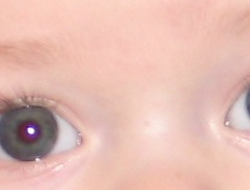Eye Health: Now you see it now you don’t.
Published: October 26, 2019
Normal vision is usually referred to as “20/20 vision” when measured according to a Snellen chart: a chart that depicts letters of decreasing size.
Reading this chart is commonly part of a vision test.
If you have 20/20 vision you will be able to read a particular line of letters without difficulty and without visual aids at a particular distance.
However, genetic factors may predict your vision from birth and many people never have 20/20 vision unless they use visual aids such as contact lenses or eye glasses.
Common genetic related vision conditions include:
Astigmatism: the spherical curve of the lens/cornea of the eye is altered such that it is irregular. The path of the light that enters your eye is changed so that light rays cannot form a common focus. The images that form on your retina are blurry, fuzzy or distorted.
Near sightedness (myopia): If you are near sighted objects which are close to you appear clear and distinct, whereas distant objects appear blurred and indistinct. You may need contact lenses or eye glasses to clearly see distant objects.
Farsightedness (hyperopia): If you are far sighted far away objects appear clear and distinct, but your close (near or reading) vision is blurred. You may need contact lenses or eye classes for reading and seeing objects close by.
Myopia and hyperopia are also age related and may be a natural effect of your aging process. Another age related vision condition is presbyopia. In this condition, which affects most people over time, you lose the ability to focus quickly on nearby objects.
Other vision loss related conditions include:
Advanced Macular degeneration (AMD): This is a condition in which you gradually lose your finest vision at the centre of your retina due to degeneration of the cells of your retina. This vision is necessary for reading, driving and identifying facial features.
Cataracts: This is a condition in which the lens of your eye becomes opaque which, if left untreated, can result in blindness. Aging is the principle risk factor, but other factors related to lifestyle may increase your risk for cataracts.
Glaucoma: This condition may be hereditary and refers to a group of vision related conditions in which abnormally high pressure in your eye damages your optic nerve. Your optic nerve is essential for good vision. Although this condition is more common in adults it can occur at any age and leads to blindness.
Frequently there are no warning signs and you may not be aware of changes in your vision until the condition is advanced.
Advanced macular degeneration, cataracts, and glaucoma cannot be corrected in the same way as myopia, hyperopia and presbyopia. Research hypotheses suggest that oxidative damage...link to the full article to learn more.
References
1.
Whitney, E. & Rady Rolfes, S. (2005). Understanding Nutrition. Belmont, CA: Thomson Wadsworth
2.

